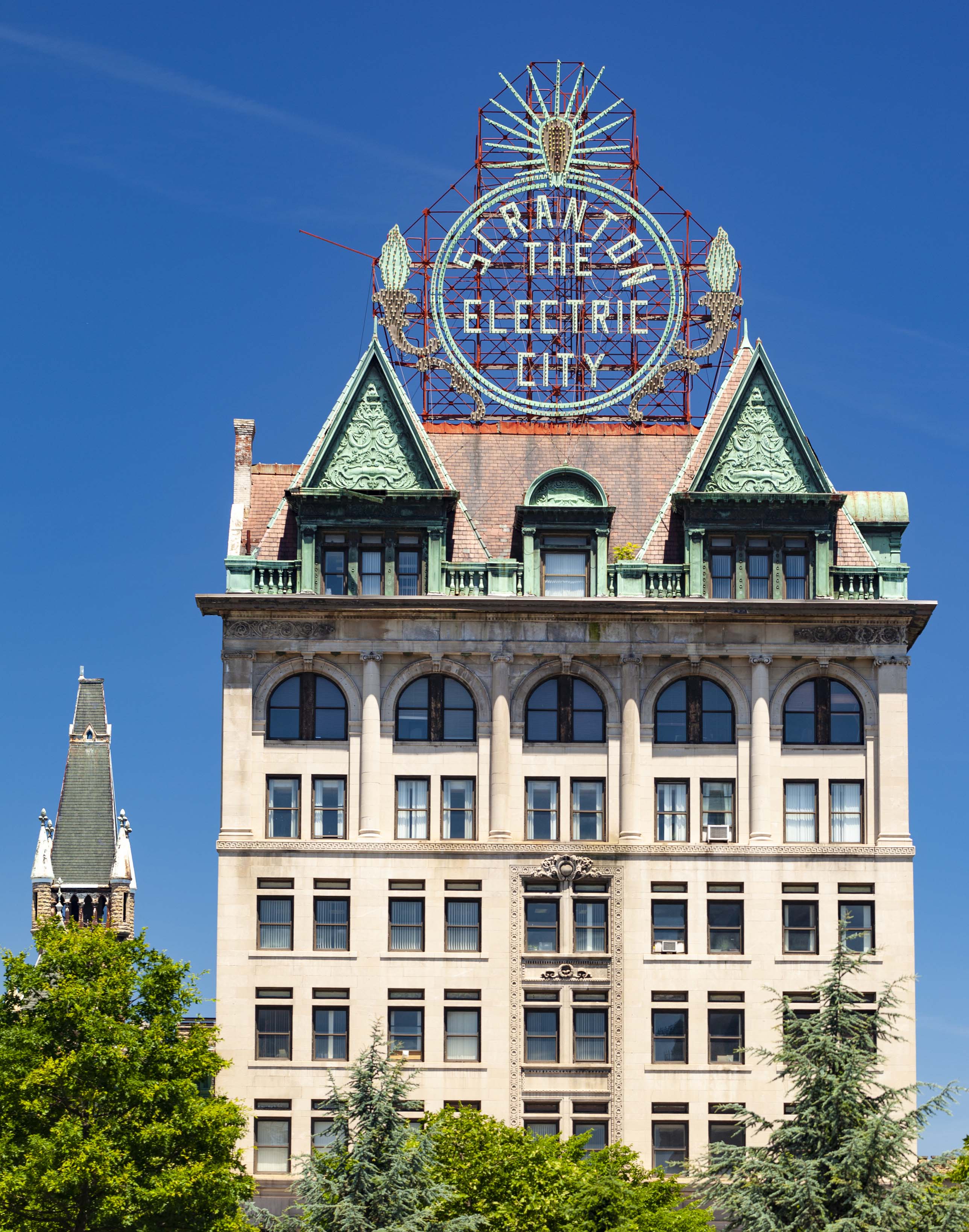Bill Eller, Vice President of Business Development recently contributed an article to the NLC’s Love My City campaign about the three ways Scranton, Pennsylvania is rebuilding its legacy.
As the National League of Cities gives member cities across the country some much-deserved love with the Love My City campaign, the NLC Service Line Warranty Program would like to extend some kudos to partner cities that have a lot to love.
Scranton, Pennsylvania, “the Electric City,” is the poster child for a legacy city that has revitalized itself with a vibrant arts scene and walkable downtown that boasts farmers’ markets, industrial buildings turned trendy lofts, special events and festivals while reclaiming its history as an industrial center and honoring its diverse heritage.
Scranton, named for the brothers who brought the first iron furnaces to what had been a small farm community, has roots as a powerhouse of industry, producing coal, iron, steel, locomotives and records.
Not only are those first furnaces preserved as a National Historic Site, supported by the Pennsylvania Anthracite Heritage Museum, but it’s also the site of the annual Arts on Fire Festival, which celebrates contemporary art and industrial heritage; and the Bonfire at the Iron Furnaces, featuring live music, dancers, performers such as fire twirlers and fire breathers, a ceremonial bonfire and multicultural fall celebrations.
The city’s railroad heritage is preserved though the Steamtown National Historic Site, which reclaimed 40 acres of the former Delaware, Lackawanna and Western Railroad Scranton yards and offers tours of the historic Locomotive Shop, living history programs depicting everyday figures from railroad history and offers train rides on the refurbished Scranton Limited.
Scranton continues to be a hub for transportation – it is located at the confluence of Interstates 81, 84, 380 and the Pennsylvania Turnpike Northeast Extension.
“This confluence has created significant regional growth in the logistics industry, which has benefited the employment picture in the City and entire area,” David Bulzoni, City of Scranton Business Administrator, said. “The City was on the verge of bankruptcy in 2014 and has now finished the past two years with stable cash surpluses.”
The steel and locomotive industries demanded coal, and to feed that demand, coal miners began mining the Northern Anthracite Coal Field, and outside demand for coal led to more railroad lines in turn. The demand for labor across industry resulted in a cultural melting pot – early Irish and Welsh immigrants were followed by Italian and Eastern European, all of whom brought their own cultural, culinary and religious traditions.
Those traditions are still celebrated today with the country’s second largest St. Patrick’s Day parade per capita with more than 12,000 participants, and La Festa Italiana, a celebration of Italian heritage and food. The city also recognizes its coal-mining heritage – although the last mine closed in the 1960s, the Lackawanna Coal Mine Tour allows you to descend 300 feet below the surface to tour a closed mine with retired miners as guides.
Although Scranton had seen success in industry, beginning in the 1950s, a waning demand for coal meant the beginning of a decline for the city that saw it lose population and businesses. With both business owners and homeowners migrating to the suburbs, a concentrated effort across public, private and non-profit groups was required to revitalize the city. Collaboration with secondary educational and medical facilities has seen a growth in “Eds and Meds” that has helped revitalize the city core – many schools are repurposing older, vacant buildings or opening up facilities to the community.
“Scranton is also home to a world-class university, the University of Scranton, as well as the Commonwealth Medical College, Marywood University, Lackawanna College, Johnson College and the Scranton branch of the Luzerne County Community College,” Bulzoni said. “The ‘meds’ side of the ‘eds and meds’ growth is the expansion of the Scranton campus of the Geisinger Health system, and the multi-hospital Commonwealth Health system.”
Scranton is a city where history and innovation are both valued. However, with an older city comes some unique issues, such as an older infrastructure and older homes with older plumbing. In a proactive move, the city partnered with the NLC Service Line Warranty Program to provide education on homeowner service line responsibilities and optional emergency home repair plans to residents.
“There are a lot of older homes,” Bulzoni said. “We have an older population, as well.”
Bulzoni noted partnering with the program was a proactive way to address one of a myriad of issues that a city of Scranton’s size faces, and the program has had few hiccups while not requiring much attention from the city.
“We also use the commission we receive from the program to fund our Scranton Homeowner Assistance program,” he said. “It is a grant program managed by the nonprofit Neighborworks and has enabled the City to assist homeowners with capital improvements to their residences. The program has been very well received.”
Like Scranton, you can protect your residents from unexpected repair costs by partnering with the Service Line Warranty Program and providing optional emergency home repair plans. The program also educates homeowners on their responsibility to maintain their utility service lines, reducing calls to city offices.
The program has award-winning call centers that are available 24/7/265 and a nationwide network of contractors who are licensed, insured and thoroughly vetted. To learn how you can provide peace of mind for your residents please contact us.


